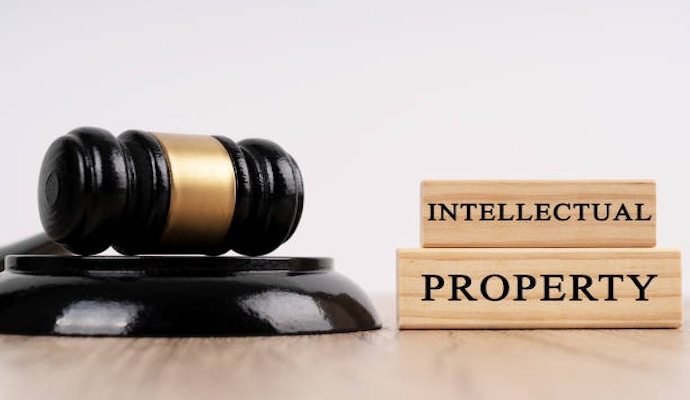Exploring 5 types of intellectual property protections in pharma
Patents, trademarks, copyrights, trade secrets, and regulatory exclusivities offer intellectual property protections to pharmaceutical companies.

Source: Getty Images
- The Journal of Advanced Pharmaceutical Technology & Research defines intellectual property as “any original creation of the human intellect such as artistic, literary, technical, or scientific creation.”
Intellectual property rights or protections are offered to inventors, creators, or owners of particular intellectual property for a specified period, preventing others from profiting from said property. These rights play a critical role in the pharmaceutical industry, where research and development costs continue to increase, burdening researchers and innovators financially. Theoretically, intellectual property rights protect an innovator’s right to profit from their product for a specified period, potentially offsetting the losses accrued during the research and development process.
According to Suffolk University, there are four primary areas of intellectual property law: patents, copyrights, trademarks, and trade secrets. However, varying industries may apply these areas of intellectual property law differently. In the pharmaceutical industry, patents, trademarks, copyrights, trade secrets, and regulatory exclusivities play a vital role in protecting pharmaceutical companies and creating a competitive landscape for drug development.
Patents
Pharmaceutical patents are one of this industry's most common types of intellectual property protection. According to the United States FDA, patents are granted by the US Patent and Trademark Office and can be filed at any point during the drug development process. Standard patents offer protection for 20 years from the day the claim is filed.
Pharmaceutical patents offer protection for multiple aspects of a drug or product and may cover new chemical entities, drug formulations, manufacturing processes, and medical uses of known compounds.
A patent on a product grants the pharmaceutical company exclusive rights to market new or improved versions of drugs, preventing other companies from making, using, selling, or importing the patented product without a license or permission from the patent holder.
The patent application process typically involves demonstrating the invention's novelty, non-obviousness, and utility.
The patent term starts from the filing date and can be extended under certain circumstances, such as regulatory delays in obtaining marketing approval. Pharmaceutical companies have been critiqued for abusing the patent system to extend market exclusivity, preventing the production and sale of generic products, and ensuring the patent holder profits extensively.
Regulatory Exclusivity
Although it can be confused with a patent, regulatory exclusivity is a different kind of intellectual property protection in the pharmaceutical industry. While the two types of protection offer similar benefits, the US FDA governs regulatory exclusivity in the pharmaceutical industry.
According to the FDA, “Exclusivity refers to certain delays and prohibitions on approval of competitor drugs available under the statute that attach upon approval of a drug or of certain supplements.”
Exclusivity terms are shorter than patent terms; however, the exact length depends on the type of exclusivity at hand:
- Orphan Drug Exclusivity (ODE) is seven years long.
- New Chemical Entity Exclusivity (NCE) is five years long.
- Generating Antibiotic Incentives Now (GAIN) Exclusivity is five years added to certain exclusivities.
- New Clinical Investigation Exclusivity is three years.
- Pediatric Exclusivity (PED) is six months added to existing Patents/Exclusivity.
- Patent Challenge (PC) is 180 days for abbreviated new drug applications (ANDAs) only.
- Competitive Generic Therapy (CGT) is 180 days for ANDAs only.
The FDA claims these terms and lengths promote drug innovation by incentivizing discoveries while ensuring expanded public access to generic drugs after regulatory exclusivity ends.
While a patent’s term begins once the patent is filed, exclusivity depends on regulatory approval or statutory requirements. The start of these protections does not necessarily coincide.
Trademarks
Although patents and regulatory exclusivities are the most widely used forms of intellectual property protection in the pharmaceutical industry, other protections, including trademarks, can play a critical role.
Trademarks are vital for pharmaceutical companies to establish and protect their brands. A firm brand name and logo can build consumer trust and loyalty. Trademarks help consumers distinguish between different pharmaceutical products and prevent others from using similar marks that may cause confusion or dilution of the brand. Registering trademarks with national or international trademark offices provides additional legal protection and enforcement options.
Copyrights
Another less commonly discussed type of intellectual property protection in the pharmaceutical industry is copyrights. Unlike the previously listed protections, copyrights rarely apply to the actual pharmaceutical product produced by a company.
However, copyrights can help protect pharmaceutical research and creative works distributed by a pharmaceutical company. This includes product literature, packaging designs, websites, software, and marketing materials. Copyright protection grants the creator exclusive rights to reproduce, distribute, display, and modify the copyrighted works. Pharmaceutical companies must respect copyrights and obtain appropriate permissions when using third-party copyrighted materials.
Trade Secrets
Trade secrets are confidential and valuable information that gives a company a competitive advantage. In the pharmaceutical industry, trade secrets include undisclosed formulas, manufacturing processes, research data, clinical trial results, or business strategies. Unlike patents, trade secrets do not require registration but rely on maintaining secrecy. Companies use various measures, such as restricted access, non-disclosure agreements, and employee training, to protect their trade secrets. Legal remedies can be pursued if trade secrets are unlawfully disclosed or misappropriated.
It's essential for pharmaceutical companies to strategically manage their intellectual property portfolio, including obtaining appropriate IP protections, monitoring competitors, enforcing their rights, and ensuring compliance with laws and regulations. Additionally, it's worth noting that intellectual property laws and regulations can vary across jurisdictions, so companies operating globally must navigate different legal frameworks to protect their innovations effectively.
